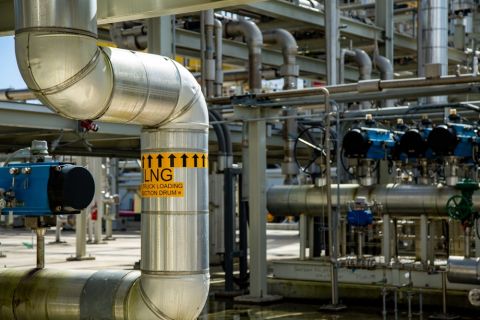The Michigan Department of Natural Resources (DNR) has decided to resume oil and gas leasing, using directional drilling, under the Great Lakes. The state's natural resources commission promptly expressed overwhelming support of the action. The decision ended a suspension that began in 1997 while DNR conducted a comprehensive review of its leasing process. Simultaneously, the Michigan Environmental Science Board (MESB), at the request of Gov. John Engler, studied technical, environmental and social issues connected with directional drilling. MESB concluded that there was little or no risk of contamination to the Great Lakes bottom lands or waters from directionally drilled wells into the Niagaran Reef and deeper reservoirs. DNR's decision reflects input from both environmental and oil-industry groups, according to K.L. Cool, the state agency's director. "Oil and gas development under the bottom lands of the Great Lakes has been a successful ongoing regulated activity for decades," he observed. New leases will reflect several leasing and regulatory changes, however. DNR will develop a coastal inventory before considering a lake-bottom lease application in a given geographic area. Drilling will have to take place at least 1,500 feet from the shoreline. New storage and treatment equipment and access roads associated with the wells also will have to be that distance from shore. All well and production equipment will have to be screened from shoreline and public recreation areas. Wells, equipment and access roads will be prohibited in sensitive coastal environments. Disposal of drill cuttings in excavated pits also will not be allowed.
Recommended Reading
Battalion in Compliance with NYSE American after 2023 Meeting
2024-02-13 - Previously, Battalion Oil was not in compliance with the NYSE after failing to hold an annual meeting of stockholders during the fiscal year ending Dec. 31.
JMR Services, A-Plus P&A to Merge Companies
2024-03-05 - The combined organization will operate under JMR Services and aims to become the largest pure-play plug and abandonment company in the nation.
New Fortress Energy Sells Two Power Plants to Puerto Rico
2024-03-18 - New Fortress Energy sold two power plants to the Puerto Rico Electric Power Authority to provide cleaner and lower cost energy to the island.
Tellurian Executive Chairman ‘Encouraged’ by Progress
2024-03-18 - Tellurian announced new personnel assignments as the company continues to recover from a turbulent 2023.
Kissler: OPEC+ Likely to Buoy Crude Prices—At Least Somewhat
2024-03-18 - By keeping its voluntary production cuts, OPEC+ is sending a clear signal that oil prices need to be sustainable for both producers and consumers.





